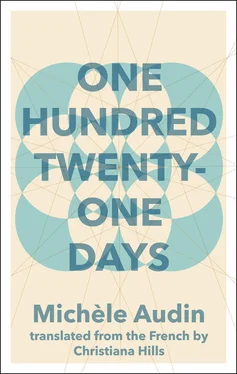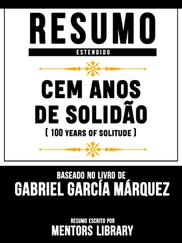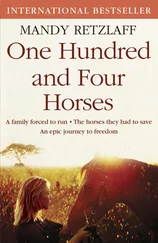POUCH 6
LETTER FROM HENRI PARISET TO MIREILLE DUVIVIER (3-19-48) AND LETTER FROM SAMUEL REISKY TO PARISET (3-10-48)
(Copies, the originals belong to Pierre Meyer)
Paris, March 19, 1948
Dear Mademoiselle,
I hope that you are in good health and that your work at the National Library continues to be enjoyable. I’m forwarding you a letter I have just received from the United States which I’m sure will interest you.
Warmest regards,
Henri Pariset
P.S. You can keep the letter.

New York, Wednesday, March 10, 1948
Dear Professor,
I knew André Silberberg at the Monowitz camp. He was very nice. He gave the prisoners German lessons. He explained number theory, he drew a square in the dirt and said “here’s the root of 2.” I forget now, but he explained “perfect” numbers. Once, he gave a talk on quantum theory. He spoke about you, his professor. He helped us a lot. Excuse my French, it’s not very good, I can’t write very much. I was born in a village in Poland, but I lived in Paris (Rue de Ménilmontant). Now I live in the United States and I’m learning English. Someone told me he’s dead. I’m very sorry to hear that.
Kind regards,
Samuel Reisky
How do you talk about Auschwitz?
POUCH 7
ANNOUNCEMENT FROM LE MONDE
(Newspaper clipping)
Nicole Duvivier, née Gorenstein,
and her daughter Mireille
are saddened to announce the death,
at the age of 56, of
ROBERT GORENSTEIN
mathematician
x 1911
on the 12TH of October, 1949.
The funeral will take place at the crematorium of
Père-Lachaise Cemetery
on the 17TH of October at half past ten in the morning.
No flowers or wreaths please.
The “x” marks his graduation date from the École Polytechnique. Pierre Meyer’s memories: very intimate service, Nicole, Mireille, Pariset with two colleagues, Pierre.
POUCH 8
TRIP TO OXFORD, MARCH 2009
(Harold Smith Archive Collection)
Wonderful collection of mathematical manuscripts. But also lots of letters to his wife. Both died rather young.
Letter from Harold Smith to Barbara Smith (6-8-50) (re-transcribed from the original English).
(To understand this letter, it’s important to know that Charlotte Kürz married Wilhelm Hermann (mathematician, student of Kürz) in 1949.)
June 8, 1950
My dear Barbara,
After yesterday’s long and serious letter, I’ll try to be more trivial today. This time it won’t be the description of a library, statues, or monuments, but a pastry shop. This one is called Korb & Schlag (which means “basket and cream”). I had my breakfast there this morning, on Hermann’s recommendation. Truly extraordinary. I will try to bring you a few Schokoladekugeln.
I have to go and give my first talk, I’ll continue this letter tonight or tomorrow morning.
It’s late, but I’m picking up my pen again to tell you about the evening I’ve just had at the Hermanns’. I was truly quite honoured by their invitation, even more so because they had also invited several of their friends and colleagues, the biologist Tiedemann and the historian von Apfeldorf — you know, the specialist in the German Middle Ages — with their wives, as well as Hermann’s wife’s parents, namely Heinrich Kürz himself — whose work I’ve told you about, but whom I had never met in person before — and his wife, Frau Kürz, whose first name I didn’t hear.
The Hermanns live in a pretty house on Schillerstrasse. It’s not very far from the centre of town, in an utterly charming residential neighbourhood. To start, we had pre-dinner drinks in the garden, under a linden tree, between the rhododendrons and rosebushes in full bloom. The dinner was German, but delicious: a Gruyère salad, a pork roast with cranberry sauce and sautéed potatoes, and an apple tart (brought by the Tiedemanns, if I understood correctly). The wine was French, and I have to tell you, everything was perfect. Then, coffee, kirsch, pipes, and music.
Probably owing to the presence of the distinguished historian, the conversation was mainly about the origins of German folklore and fairy tales, in particular the story of Faust — I should really say stories, because there are a lot of them. It was a bit highbrow, but fascinating. I’ll tell you everything I learnt as soon as I get back. We also talked about dogs, I think it was because of a tradition from northern Germany in which the devil is accompanied by a dog.
All this naturally took place in German, and I think I managed quite honourably.
Kürz played a Beethoven sonata for us,
Sonata quasi una fantasia
, he announced, it’s the one we call
Moonlight
. I’m sure you’ve already heard me say he’s a very good mathematician, so I was very impressed that he was also such a good pianist.
Von Apfeldorf and his wife drove me back to the hotel. I’m stopping now, because it’s quite late and I have to give a second lecture tomorrow. By the way, I haven’t even said anything about the one I gave today: it went rather well, even if I may have gone a little too fast. I wrote my summary in a huge register that was started in… 1888! I was awestruck to be writing after so many well-known names. This time I’m really stopping.
With all my love, your
Harold
Note: so many linden trees! What differences were there between a summer evening at Tiedemann’s in 1943 and a summer evening at Hermann’s in 1950?
POUCH 9
RETURN TO N., JUNE 2006
(Heinrich Kürz Collection)
Letter from the medieval historian Ernst von Apfeldorf to Heinrich Kürz (6-9-50) (re-transcribed and translated from the German).
June 9, 1950
Dear Heinrich,
We had such a pleasant time at your son-in-law’s yesterday evening! Despite her youth, Mrs. Hermann is a true lady of the house and a perfect hostess. And what finesse! The dinner was exquisite and Mrs. Tiedemann’s tart was also a success, as always; Frau Schlag must ask for her recipe! Even the English guest was charming, once we got used to his accent. But the highlight of the evening was assuredly your exceptional interpretation of Beethoven’s sonata. And how right you are in saying that it expresses the true German spirit!
Please send my kindest regards to Mrs. Kürz.
Best wishes,
Apfeldorf
Von Apfeldorf describes the same evening as Smith in his letter (cf. pouch 8).
POUCH 10
ANNOUNCEMENT FROM LE FIGARO
(Newspaper clipping)
The Mortfaus, Langlois,
Dubois, Meyer, and Besson families
regret to announce the passing of
CHRISTIAN MORTFAUS
x 1911
Croix de Guerre with one mention
Grand Croix de la Légion d’Honneur
Deceased the 11th of November, 1996, in Paris, 7th arr.,
in his one hundred and fourth year.
Succeeded by his children, grandchildren,
and great-grandchildren.
Pray for his soul
The religious service will take place
on the 18th of November at ten o’clock
at the Cathedral of Saint-Louis des Invalides.
The burial will be at two o’clock
in the vault of the Janvier and Mortfaus families
at Père-Lachaise Cemetery.
Читать дальше













